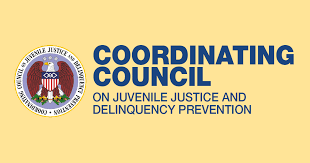Each POLICY provides law enforcement agencies and officers with guidance on how to interact with youth in developmentally appropriate, trauma-informed, equitable ways that comply with the law. Additional source and background information for the policy can be found in the APPENDIX.
SFY has developed a set of model regulations for law enforcement agency interactions with youth, based on our 12 Model Law Enforcement Policies for Interactions with Youth. These model regulations were written in the specific context of the ongoing work of the Massachusetts Peace Officer Standards and Training (POST) Commission’s work to develop “juvenile operations” certification standards for law enforcement agencies.
However, the overall substance of the model regulations are relevant and helpful to other POST Commissions, state accreditation agencies, and law enforcement agencies seeking to better support officers in their interactions with youth. We recommend pairing these model regulations with model policies, which should be integrated into officer training.
Rising reports of harmful interactions between youth and law enforcement agencies and the lack of model policies led Strategies for Youth to fill this void with its 12 Model Law Enforcement Policies for Youth Interactions. These policies are the first of their kind to be introduced and provide a valuable roadmap for law enforcement leaders, elected officials, communities and insurance providers.

SFY Model Policies have been recommended San Francisco Police Commission and are in the the process of being adopted by the SFPD.
Read »

SFY's Model Policies are being featured as a series in Juvenile Justice Update. The Editor remarks,
"The Model Policies are neither radical nor confrontational. They are grounded in experience, understanding, respect, and common sense. They, or something very much like them, should become a part of the charter of every law enforcement agency in the country."
• Spring 2025 Issue »
• Winter 2025 Issue »
• Fall 2024 Issue »
• Summer 2024 Issue »
• Spring 2024 Issue »

SFY's Shelley Jackson submitted comments to the Federal Coordinating Council on Juvenile Justice in response to its request on how to reduce number of youth going into the juvenile legal system. Read »

Dispatch, the USDOJ COPS office newsletter, released a feature article about the need for policies and SFY's Model Policies initiative. Read »
Visit our Model Policies media page for media coverage, our press release, inquiry contact, and related information.
Poll results show Americans want policies and training for law enforcement interactions with youth.
No Data Found
Strategies for Youth wishes to thank the 5 Together Foundation for their generous support which has made this endeavor possible.
© Strategies for Youth. All rights reserved.
Please sign up for our newsletter to the latest on Strategies for Youth’s efforts to create safe and thriving communitities for our children.